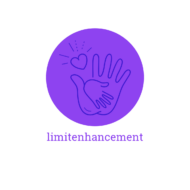Understanding the stages of speech development is crucial for parents and educators alike. It’s during the preschool years that these milestones take on a significant role. But when exactly does the magic happen? What age is considered critical for speech development in preschoolers?
This article will delve into the fascinating world of language acquisition, highlighting the pivotal age for speech development. We’ll explore why this period is so crucial and how it sets the stage for future communication skills. With insights from experts in the field, we’ll help you navigate this important phase of your child’s growth. So, let’s unravel the mystery of preschool speech development together.
Which Age Is Considered Critical For Speech Development During The Preschool Years
In a child’s life, each phase holds monumental significance, but one often stands out within the realm of speech development. Many experts mark the preschool years as a critical period for the fruition of speech and language skills. Let’s delve into the progression from birth to preschool and common developmental markers to better comprehend this pivotal period.
The Progression of Speech from Birth to Preschool
 From birth to roughly the age of five, children undergo rapid speech and language development. As infants, their communication begins with crying, then advances to cooing, babbling, and eventually saying their first words, typically around their first birthday. Most two-year-olds use two to four-word sentences and, by three years old, they can construct sentences using five or more words. Children by the age of four usually speak in complete, grammatically correct sentences and can carry on a conversation. Undeniably, the groundwork for speech and language skills lies firmly within these initial years.
From birth to roughly the age of five, children undergo rapid speech and language development. As infants, their communication begins with crying, then advances to cooing, babbling, and eventually saying their first words, typically around their first birthday. Most two-year-olds use two to four-word sentences and, by three years old, they can construct sentences using five or more words. Children by the age of four usually speak in complete, grammatically correct sentences and can carry on a conversation. Undeniably, the groundwork for speech and language skills lies firmly within these initial years.
Typical Speech Developmental Markers in Preschoolers
Preschoolers, aged between 3 to 5 years, exhibit several key indicators of speech development. For instance, by three years of age, most children have a vocabulary of about 1,000 words and can articulate their needs clearly. Come four years, their vocabulary escalates to 1,500 words and their pronunciation improves. They start using more complex sentences, begin to understand grammar and are able to tell simple stories. As they turn five, their vocabulary further expands, reaching about 2,200 words, and they become proficient in using future tense. During this time, they also demonstrate sophisticated language use, such as the ability to express ideas and emotions, understand and use comparative words and follow multi-step instructions. Contrary to the commonly held belief, the greatest strides in language and speech development generally occur during the preschool years rather than earlier stages in a child’s life. Critical indeed, this phase lays a robust foundation for kids’ future communication skills.
Why Early Years Are Pivotal for Speech Development
Early childhood, notably the preschool stage, is a critical time for speech development according to the Critical Period Hypothesis. The brain, being particularly malleable during these years, adapts and responses profusely to language input, creating neural connections that facilitate language acquisition. Preschool children, exposed to rich language environments, show significant advances in speech, vocabulary, and language structure. This phenomenon underlines the immense importance of these years in shaping children’s future communication skills.
Identifying the Critical Age for Speech Development
In the course of understanding speech development, certain ages emerge as critical for language advancement. Reflecting on the arguments of the Critical Period Hypothesis, these ages often lie within the preschool years.
Research Insights on Speech Development Timelines
Various studies indicate that speedy language development transpires between the ages of one and five. Around one year, a child typically matures from babbling to saying their first words. By age three, they usually construct small sentences, with a vocabulary that extends to hundreds of words.
By the time the child reaches four and five, they exhibit a rapid expansion in their language capabilities, narrating long tales, asking complex questions, and using intricate sentences. They begin understanding concepts like past, present and future, demonstrating advanced cognitive skills.
Recognizing Speech Delays and Their Implications
 Detecting a speech delay early can significantly aid in addressing it effectively. Markers of a possible speech delay in a three-year-old can include limited vocabulary, challenges in stringing words together, and frequent mispronunciation of common words. More tellingly, a four-year-old having difficulty in forming full sentences, struggling with plurals, or incapable of recounting a basic story, might be experiencing a speech hindrance.
Detecting a speech delay early can significantly aid in addressing it effectively. Markers of a possible speech delay in a three-year-old can include limited vocabulary, challenges in stringing words together, and frequent mispronunciation of common words. More tellingly, a four-year-old having difficulty in forming full sentences, struggling with plurals, or incapable of recounting a basic story, might be experiencing a speech hindrance.
In a nutshell, recognizing and addressing speech delays promptly can ensure the child’s successful language development. Hence, parents and caregivers play a vital role in understanding the critical age for speech development, tracking milestones, and identifying potential delays. Though each child’s progress varies, these markers, research insights, and understanding the implications of speech delays can form an essential resource for effective language development monitoring.

